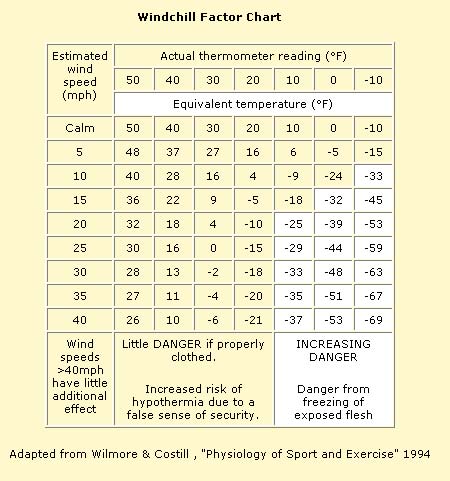Workout Tips for Exercise in the Cold
Exercise Safely in the Cold
When the weather turns crispy, it's a challenge to exercise comfortably and safely. Here are some tips on how to manage your workout in cold temperatures and wet weather.
What factors affect a person's ability to tolerate cold?
- A person with a significant amount of lean body mass (particularly muscle) has an advantage in the cold. Muscle generates a lot of heat, provides thermal insulation and contributes to a high rate of metabolism at rest. Maximize your muscle!
- Body size can also affect your cold tolerance. Short, small people have a large surface area-to-body mass ratio. This means that, relative to their size, they have a greater percentage of body in contact with the environment and will absorb cold or heat more quickly. Smaller can be chillier.
- Fat lying under the skin doesn't transfer heat very well, so if you have a little "extra padding" you can be thankful for some additional warmth!
- No clear differences between men and women per se have been identified for cold tolerance. However, a small, out-of-shape person may be more at risk for hypothermia. Hypothermia occurs when your body temperature drops too low, which can lead to dangerous consequences including coma/death.
What kind of clothing will keep me warm and dry?
- Dress in layers. You will trap and warm the air between each layer for an insulating effect. The outer layer should repel wind and precipitation, while the inner layers provide additional warmth. Jackets, hats and gloves/mittens can be removed or added as your body heats up or weather conditions change. A thermal turtleneck can be pulled up over the mouth to warm the air you breathe.
- Don't wear cotton next to the skin. As you start sweating, cotton captures moisture and traps it next to your body. Bad news! Your body loses heat four times faster when exposed to water (rather than air of the same temperature). Put that old t-shirt back in the drawer and use a shirt made of a wicking fabric, designed to move moisture away from the body. Wicking materials are usually some type of treated polyester blend and have names like Coolmax, Drylete, HyDrid or polypropylene. They come in different weights and thicknesses depending on the weather and your exercise intensity.
- Avoid the tendency to overdress. This will reduce unnecessary sweating which contributes to heat loss. If you're exercising vigorously your body temperature will rise, even though the air is cold. Remain dry and comfortable during exercise by removing layers as your body heats up or start out the first ten minutes of your workout feeling a little chilly. You'll warm up as you get going. Experiment to find what combination of clothing works best for you.
- Your outer layer should repel wind and rain, yet allow body heat and sweat to pass through. Look for microfiber fabrics and other materials like Gore-Tex. Well-placed vents can be unzipped to allow for air circulation. If you're moving at high speeds during sports like cycling or skiing, there's a limit to how much your outergarment can protect you from the elements, because the force of the wind is likely to push air and moisture through the fabric.
- Since a lot of heat is lost through your head and neck, a hat is important. A thermal turtleneck can be pulled up over the mouth to warm the air you breathe. Mittens, headbands and hats can prevent frostbite on fingers or ears. (Mittens keep fingers warmer than gloves.)
Should I adjust the intensity of my workout?
Did you know that cooling a muscle causes it to become weaker? Fiber recruitment patterns are different when muscles are cold, which reduces your power and speed. This means that you should consider decreasing the intensity of your workout in the cold or count on using more energy to perform the same movements. If you can maintain a normal body temperature with appropriate clothing, then your exercise performance should not suffer. During endurance competition, athletes who tire during the latter part of an event are susceptible to hypothermia because a decline in exercise intensity reduces heat production.
Are there any other workout changes I should consider?
Consider wearing heavier clothing while warming up. You'll also need to warm up longer or more vigorously to heat up your body. During a training run, you should change your course so you run out against the wind and return with the wind at your back. This helps reduce feelings of discomfort when finishing a workout with sweat-soaked clothing. If you can, exercise in the afternoon when temperatures are likely to be at their highest. During competition, continue your warm-up until right before the start of the event. If you have completed an athletic event in cold conditions, immediately remove wet garments and put on warm, dry clothing. Remember that when you stop exercising you generate less heat, but the frigid air is still pulling warmth away from your body.
When is it too cold to exercise safely?
With proper clothing and exercise adjustments, you can exercise in a cold climate. Use the chart to evaluate the actual impact of temperature and wind conditions. Early signs of hypothermia include weakness, shivering, fatigue, slurred speech, dizziness and confusion. Move immediately to a warm area for first aid.
Windchill Factor Chart

Updated: 10/2/2009
Authors
Hospital for Special Surgery